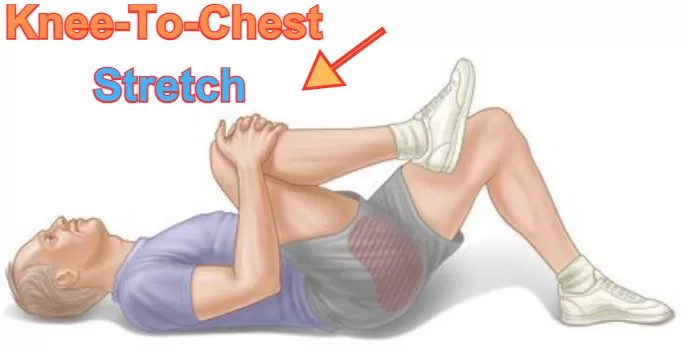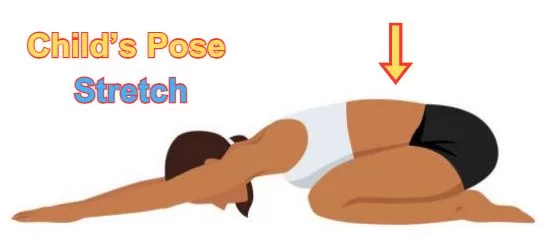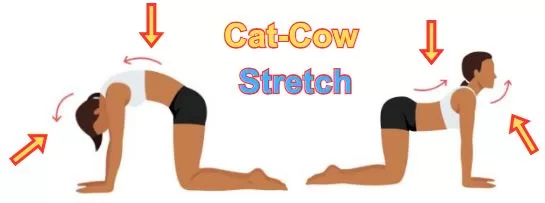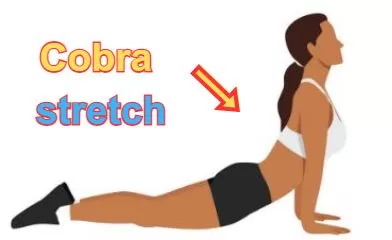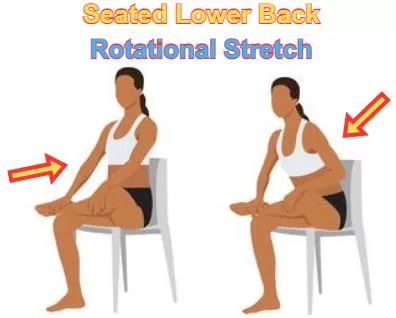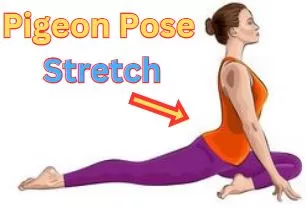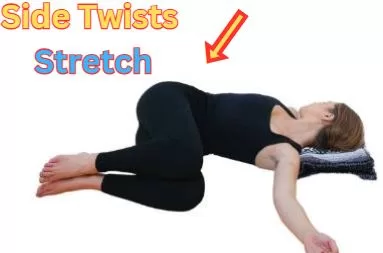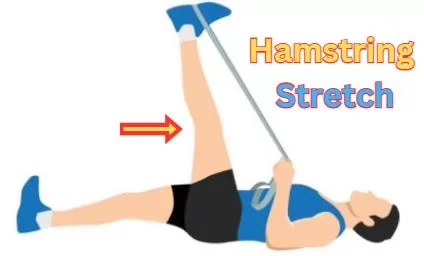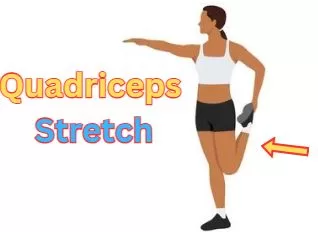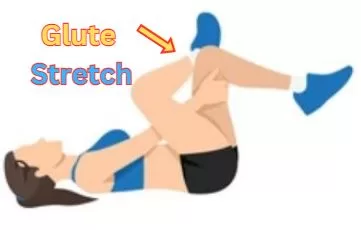10 Best Lower Back Stretches Exercises Lower back pain is a common problem that affects many people due to various reasons such as poor posture, muscle strain, and injury. Regular stretching exercises are one of the best ways to prevent and alleviate lower back pain.
In this article, we will discuss the 10 best lower back stretches exercises that you can easily perform at home or at the gym. These exercises are not only easy to perform but also help improve your flexibility, reduce pain, and prevent future injuries.
We will also provide tips on how to stretch safely and effectively, as well as the importance of stretching for lower back pain. So, let’s dive in and explore the best lower back stretch exercises!
The 10 Best Lower Back Stretches Exercises
Presented below are a selection of lower back stretching exercises that individuals can seamlessly integrate into their everyday schedule.
Knee-to-Chest Stretch
Knee-to-chest stretches contribute to the elongation of the lower back muscles, effectively alleviating tension and discomfort.
To execute the knee-to-chest stretch, adhere to the following steps:
- Lie on your back, ensuring both legs are flat against the floor.
- Gradually raise your right leg, bending the knee towards your chest.
- Utilize both hands to gently draw the right knee closer to your chest.
- Maintain the right knee in this position for several seconds.
- Return to the initial lying position.
- Proceed to repeat the process with your left leg before eventually reverting to the starting posture.
Child’s Pose
Below are the instructions for performing the child’s pose, presented in a fully human-generated manner:
- Begin by positioning yourself on the floor with your hands and knees. Ensure that your knees are spaced hip-width apart, while your hands are positioned shoulder-width apart.
- Gradually lower yourself onto your heels, maintaining the hip-width distance between your knees.
- Ease your upper body down towards the ground, allowing your forehead to rest gently on the mat.
- Let your arms rest at your sides, with your palms facing downward, in a relaxed manner.
- Inhale deeply and embrace the pose, holding it for a duration of 30 seconds to 1 minute.
- To conclude the pose, steadily raise your upper body back up, returning to the initial hands and knees position.
Cat-Cow Stretch
To execute this yoga posture:
- Begin in a position where all four limbs are on the ground. Your hands should be situated beneath your shoulders, and your knees should align directly under your hips. This marks the commencement of the Table Pose.
- Gradually curve your back upward, exerting pressure through your shoulders and allowing your head to droop towards your chest. This stance signifies the Cat Pose.
- Sustain this position for a brief interval, then gently ease out of it.
- Revert to the initial posture, but maintain the descent of your lower back towards the floor. Gradually tilt your head backward, aligning your chin and nose upwards. This denotes the Cow Pose.
- Retain this stance for a brief span, then gently release it.
- Revisit the Table Pose and proceed to replicate the entire sequence multiple times.
Cobra stretch
The cobra stretch, referred to as Bhujangasana in the realm of yoga, bestows an array of benefits upon the body. Here’s the method for executing the cobra stretch:
- Commence by lying flat on your stomach atop a yoga mat or any congenial surface.
- Position your palms on the mat adjacent to your shoulders, ensuring that your elbows remain in close proximity to your body.
- Utilize your palm pressure to gradually raise your chest off the ground, drawing strength from your back muscles.
- Maintain relaxation in your lower body while actively engaging your core muscles to lend support to your spine.
- Employ a gentle arching of your back, elevating your gaze upwards without straining your neck.
- Embrace the pose for a duration of 15 to 30 seconds, while engaging in deep breathing and preserving a sensation of comfortable stretching.
- Slowly ease your chest back down onto the mat and permit a few breaths of reprieve prior to embarking on a repetition of the stretch.
Seated Lower Back Rotational Stretch
The seated lower back rotational stretch proves to be a valuable exercise in alleviating tension and fostering flexibility in the lower back region.
Here’s a guide on how to execute the seated lower back rotational stretch:
- Situate yourself on a chair or stool devoid of armrests, ensuring that your feet rest flat on the floor.
- Cross your right leg over your left leg, positioning your right foot flat on the floor.
- Steady your left elbow against the external side of your right knee, exerting gentle pressure to engender a rotational stretch.
- Initiate the movement by progressively rotating your upper body to the right, mobilizing your core muscles to facilitate the motion.
- Embrace the stretch for a duration of 15 to 30 seconds, perceiving a mild stretch materializing in your lower back and torso.
- Regress to the initial position and replicate the stretch on the opposing side. Cross your left leg over your right leg and employ your right elbow to support the outer aspect of your left knee.
Pigeon Pose
Pigeon pose, another well-known yoga stretch, delivers a profound stretch to the hips. As this pose can be challenging, individuals should exercise caution when attempting it for the first time.
To engage in this stretch:
- Initiate from an upper plank position, resembling the setup for a push-up.
- Elevate the left foot and advance the knee directly forward towards the left hand, guiding the foot towards the right hand.
- Extend the right leg rearward as far as your range permits.
- While keeping the hips in alignment, gently lower your body toward the ground, striving to achieve the maximum depth possible.
- After a brief interval, transition to the opposite side to balance the stretch.
Side Twists
The supine twist, also recognized as the supine spinal twist or Supta Matsyendrasana in yoga, is a gentle maneuver that contributes to alleviating tension and fostering flexibility in the lower back. Here’s a step-by-step guide for performing the supine twist:
- Lie on your back, ensuring you’re on a yoga mat or a comfortable surface.
- Bend your knees and draw them in toward your chest.
- Extend your arms out sideways, aligning them with your shoulders.
- Gradually lower your knees towards one side while maintaining your shoulders in contact with the mat.
- Turn your head towards the opposite direction from your knees, encountering a mild stretch in your lower back and torso.
- Embrace the stretch for a duration of 15 to 30 seconds. Engage in deep breathing and sustain a sensation of comfortable stretching.
- Slowly revert to the initial position, subsequently repeating the stretch on the contrasting side.
Hamstring Stretch
The hamstring stretch proves effective in diminishing tension and advancing flexibility in the hamstrings, which in turn can aid in mitigating lower back discomfort. Below are various methods for executing the hamstring stretch:
- Lying Hamstring Stretch: Lie flat on the ground or a mat, extending both legs fully. To stretch the right leg, grip the back of the right knee and gradually draw it toward your chest. Sustain the stretch for 10 to 30 seconds and replicate it three times.
- Wall Hamstring Stretch: Lie on your back with your legs extended upwards against a wall. Adjust the distance between your body and the wall to achieve gentle tension in the right leg. Hold the stretch for 10 to 30 seconds and duplicate it three times.
- Sitting Hamstring Stretch: Sit on the ground with your left leg bent at the knee, the foot facing inward. Extend your right leg, maintaining a slight bend at the knee. Hinge forward at the waist while keeping your back straight. Embrace the stretch for 10 to 30 seconds and redo it two to three times.
- Seated Hamstring Stretch using a Chair: Sit near the edge of a chair with your back straight and feet flat on the floor. To stretch the right leg, extend it, resting the heel on the ground, and point the toes toward the ceiling. Lean forward from the hips and position your hands on the left leg for support. Ensure your spine remains neutral. Hold the stretch for 10 to 30 seconds and reiterate it two to four times.
- Simple Hamstring Stretch: Sit on the floor with both legs extended straight. Extend your arms forward, bending at the waist to reach as far as possible. Maintain the stretch for 10 to 30 seconds and redo it two to three times.
Quadriceps Stretch
Engaging in the quadriceps stretch proves advantageous for relieving tension and fostering flexibility within the quadriceps muscles, positioned at the front of the thigh.
Here’s a guide on executing the quadriceps stretch:
- Standing Quadriceps Stretch: Stand in an upright position with your feet positioned shoulder-width apart. Elevate your left foot behind you and clasp it using your left hand. Gently draw the foot towards your glutes, sensing the stretch in the front of the thigh. Maintain the stretch for 20 to 30 seconds, then repeat the process on the opposite side.
- Lying Quadriceps Stretch: Lie on your back with both legs fully extended. Lift your right leg, bending it at the knee. Employ both hands to tenderly draw your right knee towards your chest, encountering a stretch in the front of the thigh. Hold the stretch for 20 to 30 seconds and duplicate it on the other side.
- Seated Quadriceps Stretch: Assume a seated position at the edge of a chair or on a mat, with your legs extended in front of you. Bend your right knee and draw your right foot closer to your glutes.
- Reach back with your right hand, gripping onto the ankle or foot, and gently pull it towards your glutes. Experience the stretch in the front of the thigh. Sustain the stretch for 20 to 30 seconds and replicate it on the opposite side.
Glute Stretch
The glute stretch stands as an effective maneuver for alleviating tension and nurturing flexibility in the gluteal muscles, situated within the buttocks. Here are several methods to undertake the glute stretch:
- Seated Figure 4 Stretch: Sit on the ground, extending your legs forward. Cross your right ankle over your left knee, ensuring your right foot is flexed. Tenderly guide your right knee towards the ground, sensing a stretch in your right glute. Maintain the stretch for 20 to 30 seconds, then replicate on the opposing side.
- Seated Glute Stretch or Twist: Assume a seated position on the ground, with your legs extended forward. Cross your right leg over the left, situating your right foot flat on the ground. Rotate your torso to the right, positioning your left elbow on the exterior of your right knee. Gently exert pressure with your elbow against your knee, experiencing a stretch in your right glute. Hold the stretch for 20 to 30 seconds, then mirror the process on the other side.
- Supine Glute Stretch: Lie on your back with your knees bent and feet flat on the ground. Cross your right ankle over your left knee, maintaining your right foot in a flexed position. Gently draw your left knee towards your chest, encountering a stretch in your right glute. Sustain the stretch for 20 to 30 seconds, then replicate it on the opposite side.
Stretching is Important for Lower Back Pain
Stretching assumes a pivotal role in addressing lower back pain and fostering comprehensive back well-being. It can offer respite and heighten mobility in numerous scenarios.
The significance of stretching in the context of lower back pain is as follows:
- Alleviates muscular tension: Stretching serves to untangle tension in the lower back muscles, which often tighten and strain due to factors like incorrect posture, excessive usage, or injury. Through these stretches, discomfort can be mitigated while ushering in a state of relaxation.
- Augments flexibility: Engaging in routine stretching regimens bolsters the flexibility of the lower back and its adjoining muscles. Elevated flexibility facilitates a wider range of motion and diminishes the likelihood of muscular imbalances or strains.
- Amplifies blood circulation: Stretching elevates blood circulation to the muscles, encompassing those residing in the lower back region. Enhanced blood flow aids in supplying essential nutrients and oxygen to the tissues, thereby expediting the healing process and curtailing inflammation.
- Advocates proper alignment: Stretching contributes to aligning the spinal column and upholding optimal posture. By subjecting the muscles that provide support to the spine to stretching, the strain on the lower back is mitigated, culminating in an improved overall alignment of the spine.
- Thwarts prospective injuries: Regular stretching exercises proactively deter future lower back injuries by fostering muscle strength and flexibility. Muscles that are robust and supple exhibit reduced susceptibility to strains or sprains, thereby diminishing the prospect of enduring further pain or discomfort.
- Bolster’s core potency: Stretching routines aimed at fortifying core muscles can fortify the muscular framework that buttresses the lower back. A robust core fosters stability in the spine and diminishes the load exerted on the lower back, thereby minimizing the risk of experiencing pain and injury.
Back Stretches ExercisesTiming
When it comes to the timing of back stretches exercises, it’s important to consider a few factors. Here’s some information to keep in mind:
Duration:
- The duration of each stretch can differ based on the specific exercise and your individual comfort level. Typically, holding a stretch for around 20 to 30 seconds is advisable, as this timeframe allows the muscles to unwind and elongate.
- However, you have the flexibility to modify the duration according to your preferences and requirements.
Frequency:
- Consistency is key when it comes to back stretch exercises. Regular engagement is beneficial to uphold flexibility and alleviate lower back discomfort.
- Strive for a frequency of at least three to four times per week. Nonetheless, you can adapt the frequency to align with your schedule and unique needs.
Warm-up:
- Prior to embarking on back stretch exercises, it’s crucial to prime your muscles with a warm-up. This can be achieved through gentle movements like walking or light cardio exercises.
- This warming up phase boosts blood circulation and readies the muscles for the stretching routine.
Cool-down:
- Once you conclude your back stretch exercises, partake in a cool-down regimen.
- This entails gentle movements and stretches that gradually restore your heart rate and breathing to a normal level.
Personalization:
- The timing of your back stretch exercises can hinge on factors such as your fitness level, flexibility, and any underlying health conditions. Your body’s cues are paramount, and you should adjust the timing accordingly.
- Should you have any concerns or specific requisites, it’s wise to consult a healthcare professional or a qualified fitness instructor for personalized guidance.
How to Stretch Safely
Ensuring safe stretching practices is essential to evade injuries and extract the utmost benefits from your stretching regimen. Below are some pointers on how to stretch safely:
- Prior Warm-up: Initiate your stretching routine with a warm-up session. This readies your muscles by augmenting blood flow and flexibility. Engage in light activities like walking or jogging for 5 to 10 minutes to prime your muscles.
- Target Major Muscle Groups: Concentrate on major muscle groups during your stretching sessions, including the shoulders, neck, calves, thighs, hips, and lower back. This approach fosters flexibility enhancement and diminishes muscular tension.
- Sustain Stretches for 30 Seconds: For optimal muscle elongation, hold each stretch for a minimum of 30 seconds. This duration grants your muscles the time to unwind and elongate.
- Breath and Relax: While stretching, remember to breathe deeply and allow your muscles to relax. Exhale as you ease into the stretch and sustain it while inhaling. Muscle relaxation heightens the efficacy of your stretches.
- Shun Bouncing: Eschew abrupt bouncing or jerking movements while stretching, as they can precipitate injuries. Opt instead for fluid and controlled motions that gradually extend the muscles.
- Symmetrical Stretching: Emphasize balance by symmetrically stretching both sides of your body. This practice curtails muscle imbalances and reduces the likelihood of strains or injuries.
- Pain-Free Stretches: While experiencing a degree of tension during stretching is normal, pain should never be part of the equation. If pain arises, immediately halt the stretch and reassess your technique, or consult a healthcare professional.
- Regular Routine: Consistency remains pivotal for successful stretching. Endeavor to incorporate stretching exercises into your regimen at least three to four times weekly. This consistency bolsters flexibility maintenance and wards off muscular tightness.
- Adapt for Injuries: In the presence of pre-existing injuries or chronic conditions, adjust your stretches accordingly. Seek guidance from a healthcare professional or a physical therapist to ensure the implementation of safe and suitable stretching techniques.
Benefit Lower Back Stretches Exercises
Engaging in lower back stretching exercises yields a multitude of advantages for individuals grappling with lower back pain. Here’s a rundown of the benefits associated with such exercises:
Enhanced Flexibility
- Regular stretching regimens contribute to heightened flexibility within the lower back and the neighboring muscle groups. This improved flexibility not only diminishes muscle tension but also amplifies the scope of motion, facilitating better mobility.
Relieved Muscle Tension
- Through stretching, the muscles of the lower back, often tense and strained due to poor posture, overexertion, or injuries, can experience tension release. By extending these muscles, discomfort is alleviated and a state of relaxation is induced.
Augmented Blood Circulation
- The act of stretching amplifies blood circulation, benefiting the muscles, including those in the lower back. This heightened blood flow results in the efficient transportation of vital nutrients and oxygen to tissues, fostering healing and curbing inflammation.
Advocated Proper Alignment
- Stretching plays a role in aligning the spine and preserving favorable posture. By targeting the muscles that provide support to the spine, the strain imposed on the lower back is mitigated, ultimately promoting a more harmonious spinal alignment.
Injury Prevention
- Consistent engagement in stretching routines significantly curbs the likelihood of future lower back injuries. Strengthened and supple muscles are less susceptible to strains or sprains, thereby minimizing the risk of enduring further discomfort.
Boosted Core Strength
- Incorporating stretching exercises that focus on core muscles fortifies the very muscles that bolster the lower back. A robust core contributes to spinal stability, reducing the burden on the lower back and consequently decreasing the potential for pain and injury.
Pain Reduction
- Lower back stretching exercises possess the capability to diminish back pain through the enhancement of flexibility, reduction of muscular tension, and promotion of relaxation. This holistic approach aids in both alleviating current pain and averting its recurrence.
Conclusion
Integrating these top 10 lower back stretching exercises into your daily regimen can wield a significant influence on your holistic health. As you prioritize flexibility and the alleviation of discomfort, you are actively advancing toward a lifestyle that’s healthier and more comfortable.
Visit our Website at Commercialvehicleinfo.com for Additional Details.
FAQs
Some of the best lower back stretches exercises include Child’s Pose, Cat/Cow Stretch, Supine Twist, and Knee-to-Chest Stretch.
Stretching can improve the flexibility of the muscles, tendons, and ligaments in the back, which is important for increasing the range of motion and reducing pain.
Yes, exercises like the Seated Lower Back Rotational Stretch and the Supine Twist specifically target the lower back muscles.
It is recommended to perform these stretches regularly, at least three to four times per week, to maintain flexibility and alleviate lower back pain.
While stretching can help alleviate lower back pain, it is often recommended to combine it with other exercises and treatments for optimal results.
It’s important to listen to your body and avoid overstretching. If you have any underlying health conditions or concerns, consult with a healthcare professional before attempting these stretches.
Yes, these stretches are suitable for beginners. However, it’s important to start slowly and gradually increase the intensity and duration of the stretches.
Yes, many of these stretches can be modified to suit the needs and abilities of seniors. It’s advisable to consult with a healthcare professional or a qualified fitness instructor for guidance.
Each stretch should be held for about 20-30 seconds to allow the muscles to relax and lengthen.
Yes, these stretches can be easily done at home with minimal equipment. However, it’s important to ensure a safe and comfortable environment for performing the stretches.
Yes, there are various other stretches that can target the lower back, such as the Cobra Stretch, Bridge Pose, and Standing Forward Bend. It’s important to find stretches that work best for your body and consult with a professional if needed.
Yes, regular stretching can help improve muscle strength and flexibility, reducing the risk of future lower back injuries.

